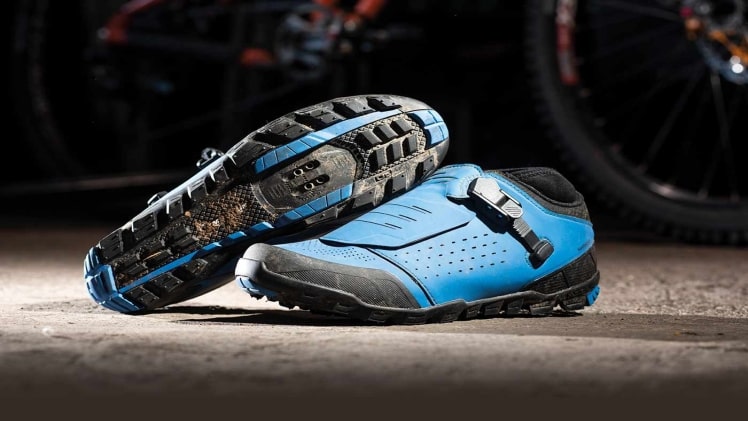What should an adequately fitted cycling shoe feel like? Not much attention is given to this vital factor by most riders. Properly fitted bike shoes should feel similar to a properly fitted everyday shoe in many ways.
- The heel of a well-fitting riding shoe should be secure, with even pressure on the forefoot.
- Your feet should not be pushed against the end of the shoe. At the end of a well-fitting cycling shoe, there should be some toe room, and the shoe should keep your forefoot steady without cramping or constraining your movement.
- There should be no significant gaps or wrinkles in the cloth in a well-fitting bicycle shoe.
- In a convenient bicycle shoe, the ball of your foot should be at the broadest part of the shoe to allow for efficient cleat positioning within the shoe’s adjustability range.
- In an appropriate cycling shoe, your feet should be solid and balanced. A tailored cycling footbed is often needed to attain proper alignment, effective power transmission, and support.
When looking for an ideal cycling shoe, keep in mind that customised footbeds take up more space than most standard insoles, so make sure you have adequate area for them. Buy bicycle shoes that are snug but not too tight, and don’t assume them to expand. While some shoes and materials allow for a tiny amount of width stretch, the length of the shoe must not be assumed to fluctuate with time.
Shoe Width:
Are there different widths of bicycle shoes? Yes. Many brands dominate the market because they make multiple widths and lasts (narrow, standard, and broad) in some or all of their designs to fit all types of feet. Don’t let the fact that you’re currently in an ill-fitting cycling shoe for your foot shape convince you that cycling shoes with a perfect fit aren’t a possibility! There are options, and they are excellent options.
Foot Support:
Proper foot support in a cycling shoe, just like in a ski boot, is critical for optimal efficiency, comfort, and prevention of injury by improving symmetry and high level even contact in between the foot and the shoe. The bottoms of most bicycle shoes are pretty flat, and the factory insoles provide little to no cushioning. Understand more about customised cycling footbeds and consider having a pair manufactured before purchasing new shoes since they can significantly improve the performance and feel of a shoe.
Cost:
Why do some cycling shoes cost $60 while others cost $500? Fit, materials, functionality, and craftsmanship quality. The more expensive shoes are handcrafted by skilled artisans and simply fit and feel better for most riders. High-quality materials (such as leather and Lorica), solid soles, ratcheting buckles, and interchangeable parts all add to the shoe’s overall longevity, functionality, and quality. Cycling shoes under $99 are not intended for serious riders. They’re made for light use, and walking comfort is sometimes just as vital as riding comfort. Shoes in the $149 range will be of good quality and geared for riders with low to moderate mileage who want to improve their performance beyond regular running shoes. Shoes in the $169-$299 range are frequently fantastic buys, with several high-end features such as ratcheting buckles, premium fabrics, and a high level of craftsmanship. With features like super-light carbon fibre soles, micro-adjustment buckles, additional harnesses for retention, the best quality fabrics, and the most polished last shapes technology can offer, $299+ bike shoes have everything technology can now deliver.
Choose based on how the shoe fits and what you plan to do with it. Spending a few extra dollars today will make your feet considerably happier and save you money on new shoes next year.

